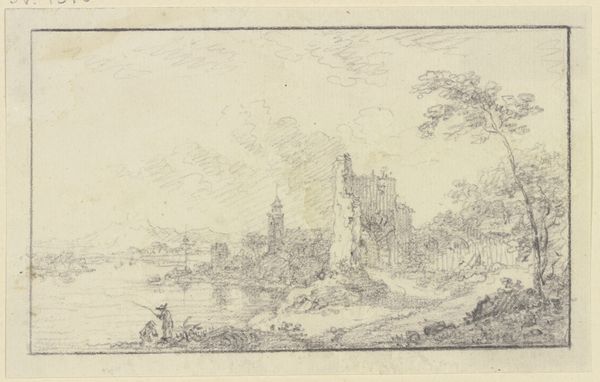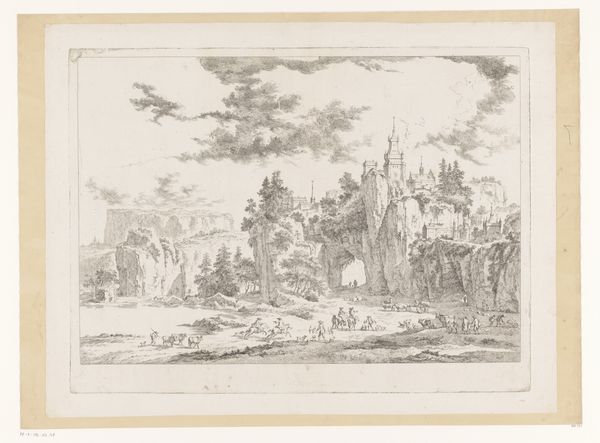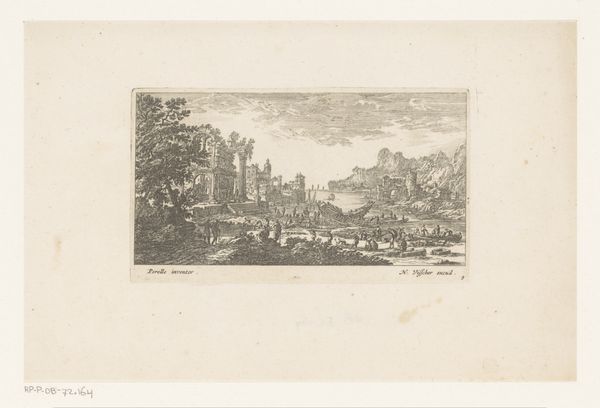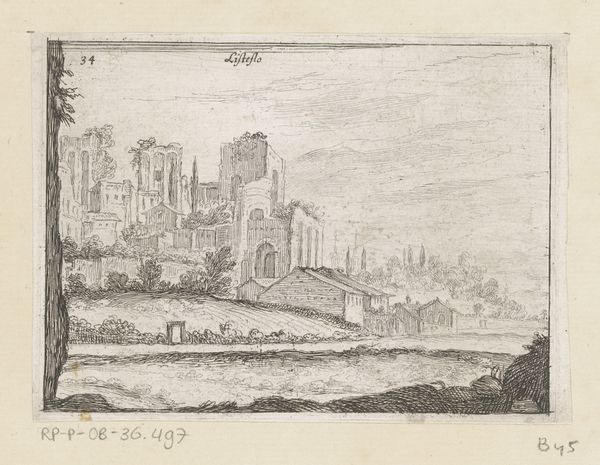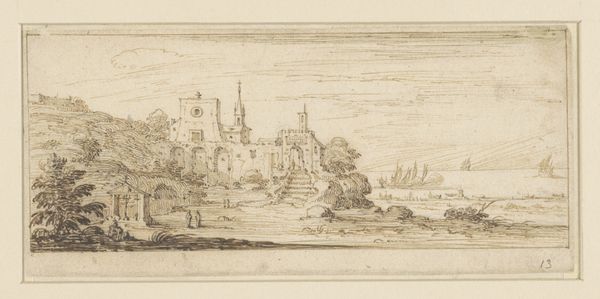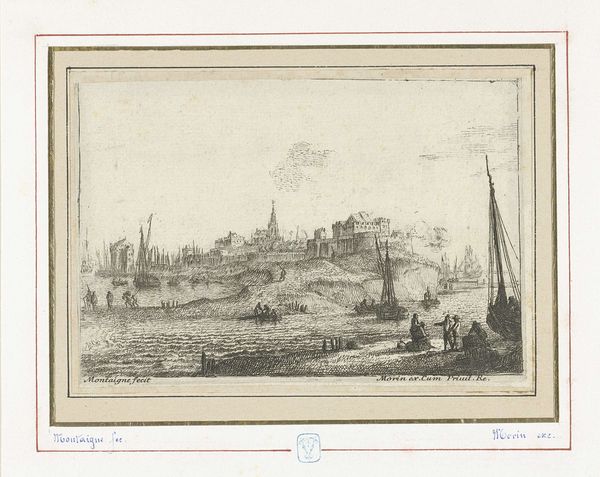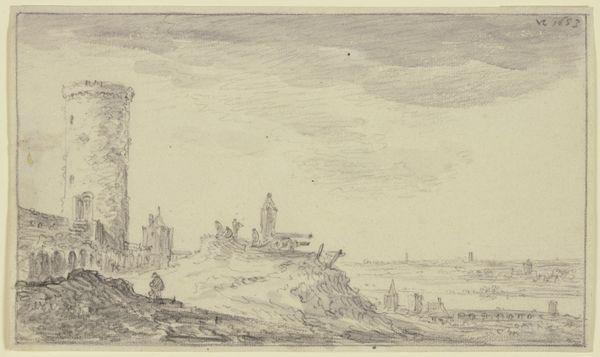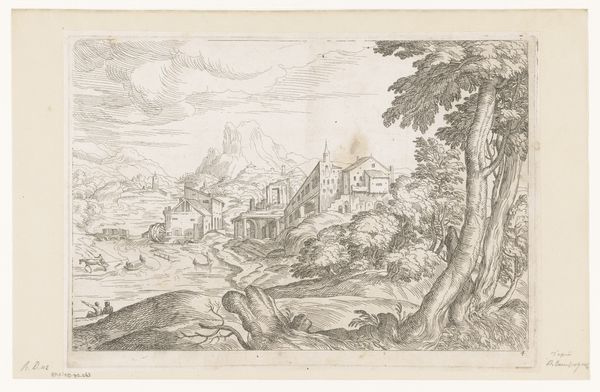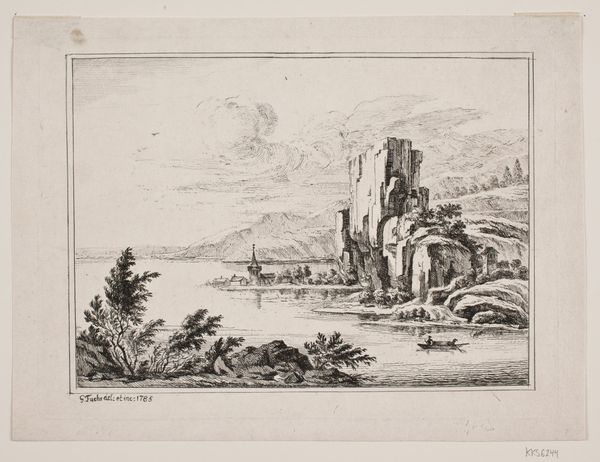
Dimensions: height 399 mm, width 534 mm
Copyright: Rijks Museum: Open Domain
Editor: So this etching and engraving by Gabriel Huquier, around 1772, is titled "River Landscape with a Castle on a Cliff." The sheer verticality of the castle and its reflection in the water are so striking. What do you see as key compositional elements in this print? Curator: The dramatic contrast between the sharply defined architectural details and the soft, atmospheric rendering of the landscape is essential. Note how the artist uses hatching and cross-hatching to create tonal variation and delineate form. Consider the rhythmic interplay of light and shadow as it guides the viewer's eye throughout the composition. How does that rhythm reinforce the subject of the image? Editor: I suppose the progression from dark shadows near the river, leading up to the lighter tones on the castle walls, helps create that sense of verticality I noticed, drawing your eye upwards. Curator: Precisely. And consider the materiality: the sharp lines of the engraving contrasting with the softer, more blurred quality achieved by etching. This textural variation enriches the visual experience. Notice too, how the line work affects the sense of space, creating depth and distance in a relatively small, flat image. What is your read of the significance and usage of line quality here? Editor: It creates atmosphere and separates the different layers of space, so you have foreground, mid-ground, and background. You're right. I had only registered that unconsciously. Thank you! Curator: It also enhances the illusion of three-dimensionality. Thinking of these techniques and effects, the use of print media in landscape depiction makes a compelling contribution to our understanding of late 18th century aesthetic concerns. Editor: Yes! It’s all so deliberately crafted to manipulate our perception. Curator: Exactly. Seeing art is so much more than the subject!
Comments
No comments
Be the first to comment and join the conversation on the ultimate creative platform.
